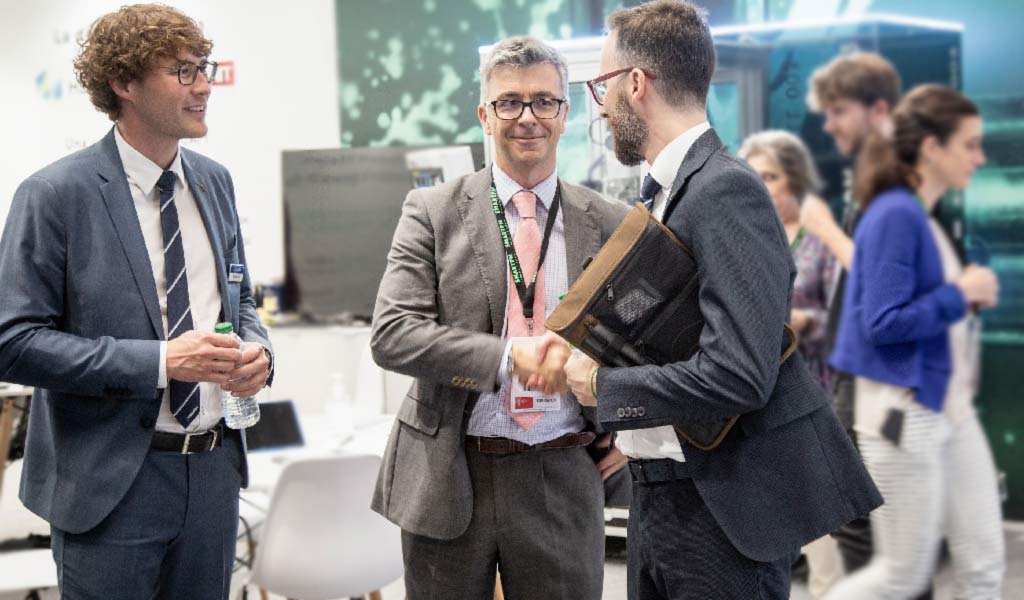You can call it smart industry, Smart Factory, Industry 4.0 or whatever you want, the important thing is the paradigm shift and the advantages it brings. On the one hand, needs are identified and demand is growing. On the other, the technology is available and increasingly accessible: automation, robots and cobots, virtualization, IoT and IIoT, Artificial Intelligence, digital and operational integration and so on.
This enormous number of alternatives and the speed at which they are being developed globally means that very few companies have the internal resources to incorporate all this knowledge within a reasonable timeframe. Therefore, collaboration (whether with external experts, customers, suppliers or even competitors) is the key ingredient for a rapid and successful transformation to the smart industry.

Is it possible to achieve the transformation to smart industry alone?
Going it alone is complicated, if not impossible. Collaboration is key in the digital era, even more so in this new industrial revolution brought about precisely by the convergence of different technologies. This contribution of multiple actors is what unlocks the full potential of innovation. The era of having one's own solutions for all problems is over.
The avalanche of new technologies available today has caused industry to undergo a profound transformation. This change, which goes beyond specific sectors or niches, presents us with a new industrial ecosystem that is much more dynamic, permeable and cooperative, where relationships are key to survival.
The days of having your own solutions to all problems are long gone.
Companies can benefit from collaborating with specialized partners capable of offering new technologies that they would never have access to on their own. Because this is what it's all about: establishing long-term relationships beyond the traditional customer-supplier model, with partners we may not have been able to count on until now.
This can make a difference in the transition to a more productive, sustainable and higher-quality industrial activity, but this requires the adoption of collaborative business models, and this requires a change of mind-set. Organizations must be more transparent, more permeable and oriented not only to their own benefit, but to the benefit of both parties.
These are some of the keys to success in smart industry development through collaboration:
- Adopt a new culture of collaboration that involves the entire organization.
- Clear and shared planning.
- Support the adoption of international standards.
Collaborative culture as part of the company's DNA
This idea of collaboration must be assumed as something profound within companies. New times require new paradigms, and it is now obligatory to open up to the outside world in order to be more flexible, dynamic and competitive. And for that to happen, it has to happen in the company at all levels, starting with management. The cooperative culture requires a leadership that is aware of this need and that makes it dynamic within the global scenario in which we find ourselves.
Development and innovation must take place between industries working collaboratively.
To benefit from these processes, companies need to be open to other sources of knowledge, to explore this information and to transform their reality in order to take advantage of its benefits. For this to happen, it is necessary that the structure and work processes facilitate it, that there is an open mind to work beyond the company's own walls, that there is transparency and communication, dedication of resources and, in short, a strong collaborative culture.
Visualize, plan, collaborate
Companies do not need to be experts in all new technologies. It is simply not feasible. But they do need to have a clear goal to work towards, and that goal will determine what kind of technologies and therefore collaborations are most necessary and fruitful for them.
Lacking this roadmap takes its toll. The day-to-day determines the pace of the company, making it difficult to make major advances by allocating resources to urgent things instead of important ones (such as innovation and transformation). The lack of strategy only leaves room for trial-and-error improvements, which is a significant waste of time and resources in most cases.
On the other hand, having a clear roadmap makes it easier to make decisions, prioritize actions and choose the right partners who are aligned with your objectives. This collaboration between companies helps to boost innovation projects, to accelerate the development and launch of new products and to facilitate real progress for companies.

Adoption of international standards, created for and by collaboration
All experts support the idea that if the effort is made collectively, the results will be better. In this sense, international standards can be one of the best "levers" for collaboration: they are born from the collaborative effort between entities at international level and their purpose is to facilitate the joint work of an entire sector.
Reaching global agreements on terminology, reference models, levels of transparency, etc. makes it easier for more entities to join this industrial revolution, improving the integration of technologies and interoperability between actors, thus favoring a virtuous circle that benefits the entire industrial sector.
The emergence of solutions under the platform model also facilitates the adoption of standards..
One way to achieve this is by playing an active role in the definition of new international standards that companies can then internalize and apply both internally and with their suppliers. Standards seek to develop and promote certain processes and technologies to be more easily adopted by the industry and provide flexibility and scalability.
Another way is to support the adoption of existing standards (since not all entities have the possibility to actively participate in the definition of standards). Adopting standards that have the support of the industry always generates more synergies and scalability, as opposed to developing hyper-customized alternatives.
Not all current technologies have standards, so there is still some way to go. This would facilitate cross-industry collaboration, unify criteria and simplify data exchange, improve information security and privacy systems, reduce costs and improve competitiveness.
In this sense, the emergence of solutions under the platform model also facilitates the adoption of standards, since they offer access to new technologies taking into account the latest international standards. These platforms, such as MIC by SMARTPMoffer a common basis on which each company can develop customized solutions adapted to its own needs.
The reliable partner for your machining processes
Now is not the time to be afraid to collaborate. Experience has shown us that together we move forward much faster. Collaboration is synonymous with growth, access to new resources, agility, productivity and flexibility. In short, of being a smarter industry.
At SMARTPM we do not see companies as independent islands, but rather we are committed to relationships based on trust. We want to share the vision of what we understand by industry with our partners and overcome together the new challenges it poses.
If you are in the industrial machining sector, through our MIC platform (innovation award-winning) we put at your service all our knowledge of processes and metrology, asset connectivity, workflow design and control and productivity improvement through predictive analytics, machine learning and autonomous cell management.
We have the technology, the knowledge and the experience, everything you need to achieve the transformation of your workshop. Together we will go further.
Header photo: Daniel Funes Fuentes - unsplash
